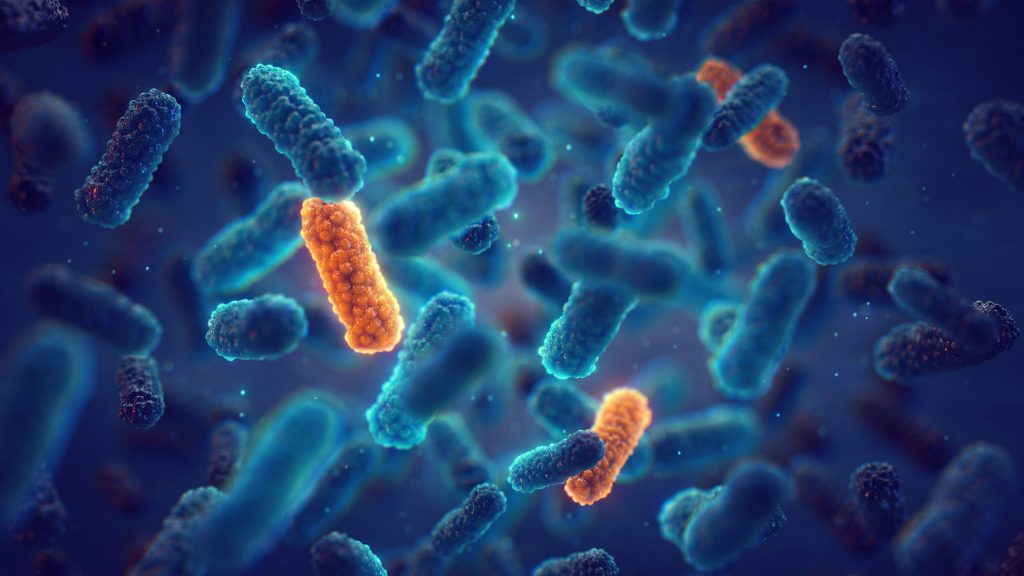Can a ‘reverse antibiotic’ combat fluoroquinolone-sensitive and fluoroquinolone-resistant E.coli strains?

The increasing prevalence of antimicrobial resistance is a global healthcare concern;1 evidence suggests that at least 700,000 people worldwide die every year due to antimicrobial resistance.2 Numerous studies have aimed to (i) decipher the resistance mechanisms of emerging drug resistant pathogens and (ii) devise innovative strategies to intercept the persistence of resistant bacterial strains.
Each bacterial cell contains a range of specialized enzymes called topoisomerases that play a crucial role in key cellular events such as DNA replication. Depending on their structure, homology and catalytic mechanisms, topoisomerases are classified into type I and type II, based on the type of DNA breaks introduced i.e., single-stranded and double-stranded breaks, respectively.3 The extensively researched type II topoisomerases are further subdivided (based on their structure and catalytic cycle features) into classes IIA and IIB, of which type IIA encompasses two key functional enzymes, namely DNA gyrase and topoisomerase IV.4 These specialized enzymes serve as attractive targets for an array of antibiotics, including fluoroquinolones (FQs), a well-known class of antibiotics.5 Evidence suggests that FQs target type II topoisomerases and their enzymes DNA gyrase and topoisomerase IV by stabilizing a covalent cleavage complex between the enzyme and the DNA with a double-stranded break that is toxic for a cell.6 Recently, there have been some reports of E. coli isolates that may be resistant to FQs, owing to mutations developing in the topoisomerase-encoding genes. To combat the potential for FQ resistance, the concept of ‘reverse antibiotics’ has been explored.5
Nybomycins (NYBs), an attractive class of compounds termed ‘reverse antibiotics’ have been found to selectively inhibit the growth some gram-positive FQR bacteria (e.g., S. aureus) by targeting the mutant form of DNA gyrase, while being inactive against wild-type strains with FQ-sensitive (FQS) gyrases.5 Meanwhile, the activity of NYBs against gram-negative species such as E. coli is less defined. A group of researchers from Russia explored the activity of NYBs on gram-negative isogenic FQR and FQS E. coli strains to elucidate their potential in combating antimicrobial resistance.5
Key findings of the study include:
- Both the FQR and FQS coli enzymes with S83L mutation were inhibited by NYBs.5
- In light of the concept of reverse antibiotics, NYBs should ideally be inactive against FQS strains and potent against FQR species by selectively inhibiting FQR DNA gyrase with the S83L/I GyrA (quinolone-resistance determining region) mutation.
- Interestingly, the present study demonstrated that FQS coli, a strain with enhanced permeability to antibiotics, was sensitive to NYBs.5
- Additionally, Shiriaev and colleagues demonstrated the ‘reverse’ inhibitory effects of NYBs on the DNA gyrase of FQR coli strains via chemical modification. These findings emphasized the extended therapeutic properties of NYBs in the management of FQR infections caused by gram-negative pathogens5
- The activity of both coli topoisomerase IV and DNA gyrase (primary target sites) were significantly suppressed by NYBs.5
- Based on earlier studies, reversibility of NYBs has been demonstrated only against certain organisms (mostly gram-positive species), and particularly only against their gyrases with no effect on topoisomerases IV.
- In addition to its antimicrobial activity, NYBs were found to exert cytotoxic effects by inhibiting human topoisomerase IIα, suggestive of anti-cancer properties.5
In conclusion, Shiriaev and colleagues emphasized the promising ‘reverse antibiotic’ potential of NYBs in antibacterial chemotherapy focused at maintaining the therapeutic efficacy of FQs. Furthermore, the cytotoxic potency of NYBs observed may provide rationale for research on its potential utility in anticancer therapeutics.
References
- World Health Organization: Antimicrobial resistance. Available at https://www.who.int/news-room/fact-sheets/detail/antimicrobial-resistance#:~:text=The%20main%20drivers%20of%20antimicrobial,access%20to%20quality%2C%20affordable%20medicines%2C. Accessed on 1 June 2023.
- Mancuso G, et al. Pathogens 2021;12;10(10):1310.
- Bates AD, Maxwell A. 2005. DNA topology. Oxford University Press, Oxford, United Kingdom.
- Sutormin DA, et al. Acta Naturae 2021;13(1):59–75.
- Shiriaev DI, et al. Antimicrob Agents Chemother 2021;95(5):e00777–20.
- Drlica K, et al. Curr Top Med Chem 2009;9:981–998.










